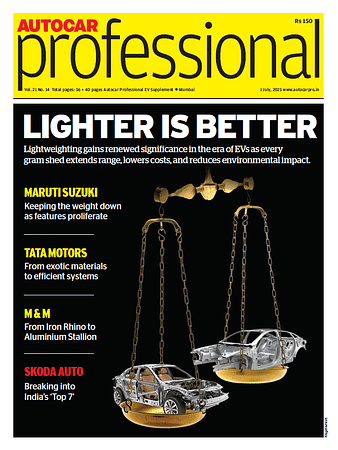MAHLE climatic wind tunnel ‘goes electric’
MAHLE expands range of services at the state-of-the-art facility in Stuttgart; enables testing of the effects of fast charging on sensitive Li-ion batteries under a wide range of possible climatic conditions
Over 40 degrees Celsius heat, the sun burning on the car, hardly cooling wind. These are difficult conditions for the temperature-sensitive Lithium-ion battery. If an electric car is then charged quickly, the battery can become too hot and be damaged. To be able to test this realistically, MAHLE has now equipped its climatic wind tunnel in Stuttgart with a direct current fast charging system.
The test engineers at the climatic wind tunnel can charge electric vehicles with up to 350 kilowatts in under five minutes for a 100km cruising range — under all climatic conditions, even in extreme heat. The measured data provide information about the effects on the Li-ion battery and passenger comfort and thus provide important findings for vehicle development.
“By expanding the range of services offered by our climatic wind tunnel in the direction of e-mobility, we will be able to support our customers even better in the development of their e-cars in the future,” said Jumana Al-Sibai, a member of the MAHLE Management Board and responsible for the business unit thermal management. “The battery is particularly demanding, and MAHLE can make a valuable contribution here with its distinctive system expertise in temperature management.”
Fast charging with up to 350 kilowatts of charging power places a large heat load on the Li-ion battery. Especially when the e-vehicle is charged in high heat and lots of solar load. The battery must always be kept within the optimum temperature window of 15 up to a maximum of 40 degrees Celsius. The vehicle’s thermal management system, i.e. the complex interaction between the cooling and air conditioning systems, ensures that the sensitive battery does not overheat and ultimately takes damage. At the same time, it must not get too hot in the driver’s cabin.
The facility in Stuttgart was built in 1937 as the world’s first wind tunnel for the automotive industry. In 2000, it was completely modernised as part of a new construction. MAHLE has continuously developed the measurement section as a pioneer in this field to this day. The facility enables realistic, precise and repeatable measurement and test conditions, so it literally brings the road into the laboratory.
RELATED ARTICLES
Skoda begins sale of made-in-India CKD Kushaq in Vietnam
Before production started, pre-series Kushaq vehicles covered over 330,000 kilometres on a variety of Vietnamese roads a...
Six Japanese companies join forces to expand use of recycled materials in new vehicles
Denso, Toray Industries, Nomura Research Institute, Honda Motor, Matec Inc and Rever Corporation have set up the BlueReb...
BYD selects Voestalpine as steel supplier for its Hungarian plant
The announcement of the Austrian steelmaker as a supplier demonstrates BYD’s strategic plan to source from high-quality,...





 By Autocar Professional Bureau
By Autocar Professional Bureau
 14 Feb 2023
14 Feb 2023
 3067 Views
3067 Views









